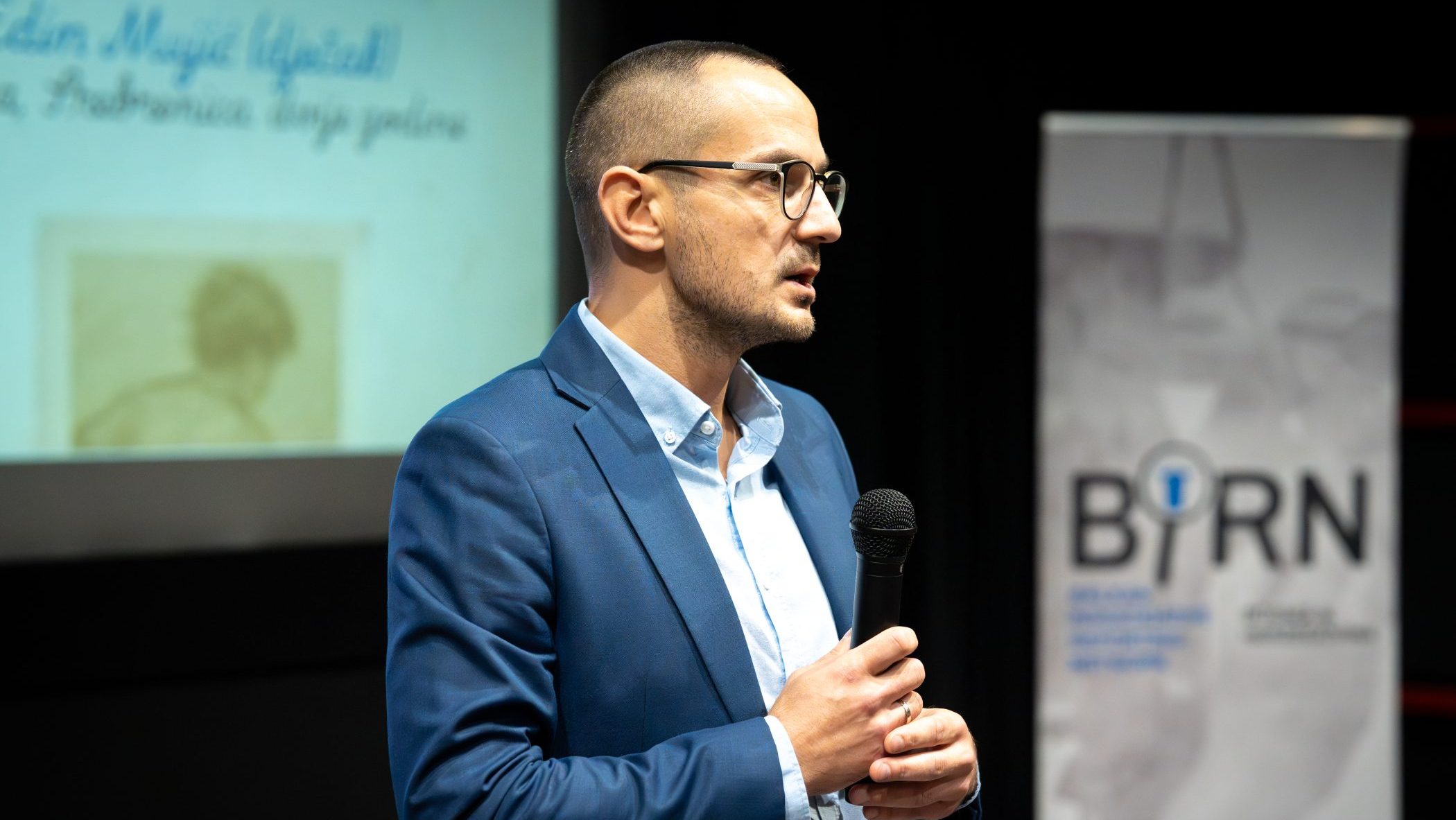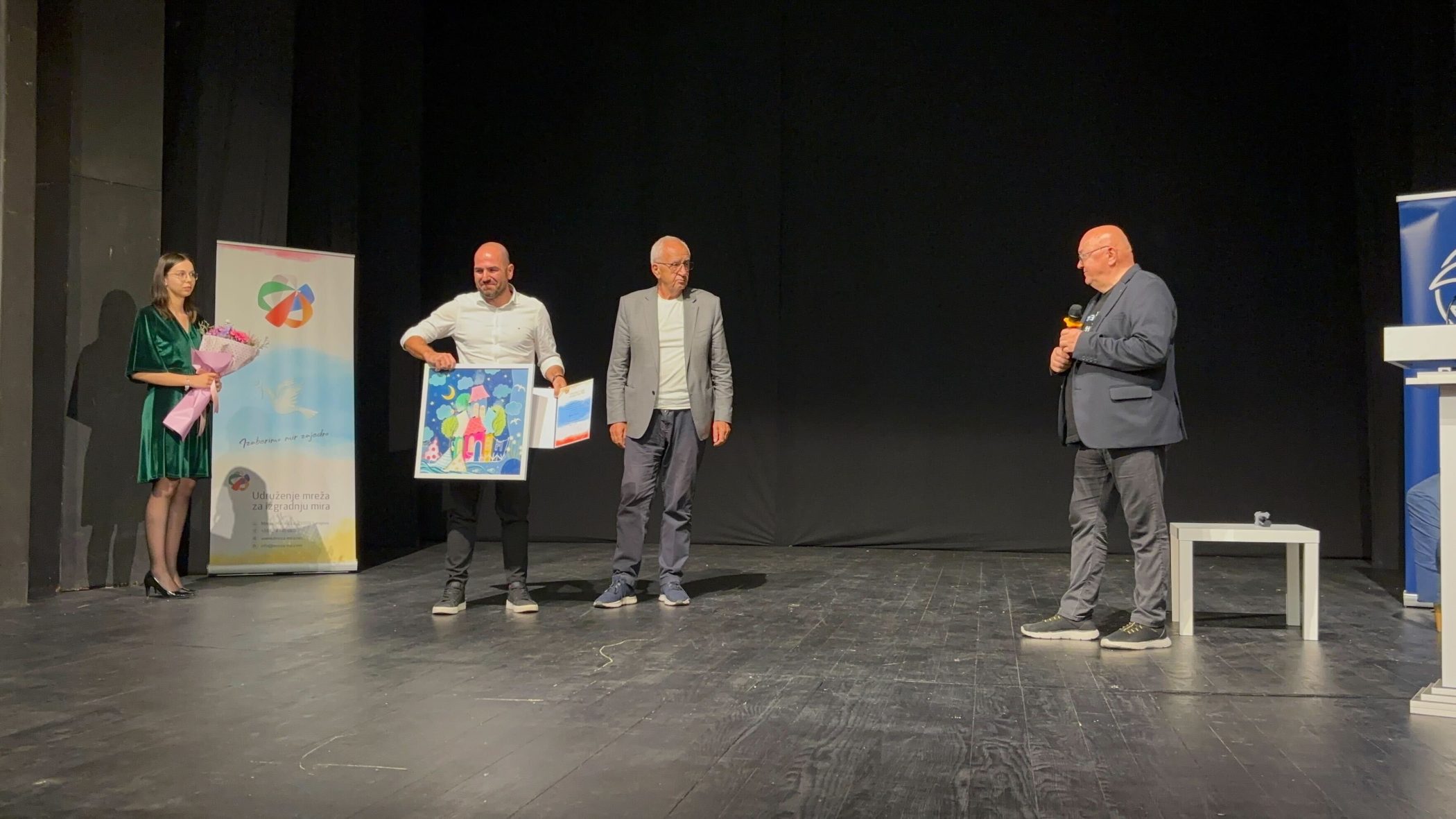This post is also available in: Bosnian
Although part of war crimes indictee Momcilo Mandic’s testimony was supposed to be closed to the public, this was not done because the former minister in the government of Radovan Karadzic insisted, “the public must know the real truth”.
The Defence then claimed that Prosecution witnesses, who have so far identified Mandic as the person who visited them in detention camps, have not been telling the truth.
According to submitted evidence, Mandic was bald at the time.
Attorney Milan Vujin submitted to the Court two photographs of the indictee: one from 1992 and the second from 1997 or 1998.
On the first photograph the indictee did not have hair, while on the second one his recognisable dark hair can be seen. According to Vujin, the indictee had a hair transplant in Serbia in 1994.
“All Prosecution witnesses who recognised him from the 1997/98 photograph were not telling the truth because in 1992 he did not have hair,” Mandic’s attorney alleged.
Some Prosecution witnesses had said earlier that Mandic visited them in detention camps, and described him as “tall, big-boned, with black hair”.
Mandic alleged that witnesses who claim they saw him during 1992 in detention camp Planjina kuca in Podlugovi, Vogosca municipality, were not telling the truth.
“I have never been there,” the ex-justice minister of the former Srpska Republika BiH said.
The Prosecution alleges that Mandic, as former justice minister was responsible for the operation of detention camps formed on the territory of Sarajevo and Foca, where non-Serb civilians were illegally detained and tortured.
In continuation of his testimony, the indictee said that Republika Srpska Army was responsible for the functioning of all correctional facilities in Sarajevo and Foca.
“On June 13, 1992 Radovan Karadzic, president of Srpska Republika BiH, gave the defence ministry authority over non-Serbs who were detained and issued orders as to how to treat them,” the indictee claims.
Mandic told the Trial Chamber that on August 21, the Bosnian Serb Assembly accepted his proposal to reorganise the justice system and to form two courts instead of the court in Butmir, near Sarajevo.
“One of the courts was located in Butmir, where the old court was, and authorised for municipalities Centar, Stari and Novi Grad and Trnovo, while the other was authorised for Hadzici, Ilijas, Rajlovac, Vogosca and Ilidza and was located in Ilijas,” Mandic claims.
According to him, this required the creation of new prosecution offices and correctional facilities. Therefore, at the proposal of the justice ministry, correctional facilities in Banja Luka, Butmir, Ilidza, Bijeljina and, finally, Foca, were formed in 1992 as well as county prisons in Trebinje and Doboj.
“They were only used for those who were serving sentences,” Mandic said.
The indictee claims that problems arose in 1992 because civilians were detained in those facilities, which was the responsibility of authorities in the municipalities where the correctional facilities were located.
“On October 22, 1992 Karadzic sent a letter in which he said that he is learning that civilians are also being detained in correctional facilities,” Mandic said, adding that the authorities then gave a “green light” to the International Committee of the Red Cross (ICRC) to visit the camps and register the detainees.
According to the indictee, in November 1992 he withdrew from the position of justice minister, moved to Belgrade and worked at the economic department of Republic of Serbia.
Next hearing is on Februaruy 28.

